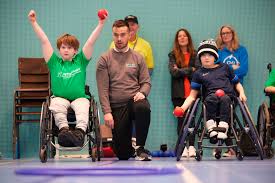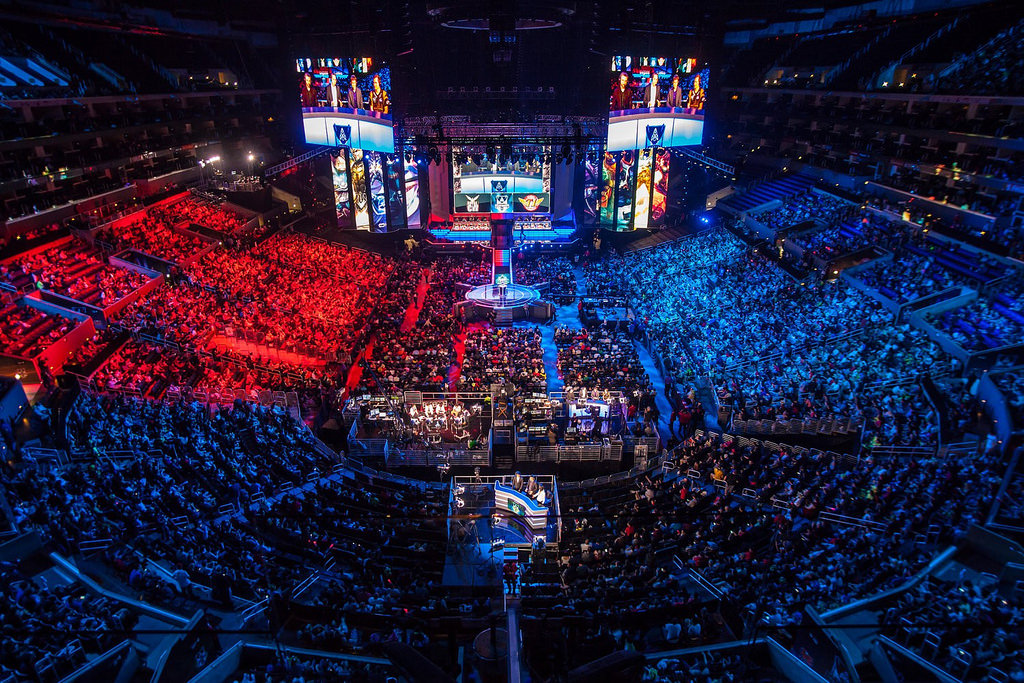The Rise of Inclusive Sports: Expanding Access and Opportunities for All

The world of sports has traditionally been a place of competition, achievement, and community. However, for many years, certain groups have faced barriers to participation due to factors such as physical disabilities, socioeconomic status, or gender discrimination. Inclusive sports—a movement focused on expanding access and promoting diversity in sports—seeks to address these challenges, making the world of athletics welcoming and accessible to everyone, regardless of background or physical abilities. This article explores the importance of inclusive sports, initiatives to improve accessibility, the benefits of diverse participation, and how new technology is paving the way for greater inclusion in sports.
1. Understanding Inclusive Sports: Beyond Just Access
Inclusive sports are about more than just creating accessible spaces; they aim to foster an environment where every individual can participate and thrive. The concept extends to all aspects of sports, including facilities, coaching, equipment, and community support. An inclusive sports culture embraces individuals from diverse backgrounds, including those with physical and intellectual disabilities, people of all genders and ages, and those facing socioeconomic challenges. By prioritizing inclusivity, sports organizations and communities help remove barriers, creating a more vibrant and diverse athletic environment.
a. Inclusion as a Core Value
At its heart, inclusive sports aim to celebrate diversity and provide opportunities for everyone. When inclusion is a priority, the entire sports community benefits, as diverse perspectives enhance the shared experience and foster a more supportive environment. Inclusion in sports also promotes values of respect, empathy, and collaboration, encouraging athletes to develop not only physical skills but also a greater understanding of others.
b. Accessible Infrastructure and Facilities
True inclusivity requires sports facilities that cater to everyone’s needs. From accessible entrances and seating in stadiums to adaptive equipment, designing facilities with universal access in mind is a crucial step toward achieving equal participation. Adaptive sports centers, wheelchair-accessible courts, and sensory-friendly environments are just some examples of how physical spaces are evolving to support inclusive sports.
2. Adaptive Sports: Creating Opportunities for People with Disabilities
Adaptive sports have played a transformative role in creating opportunities for people with disabilities. From wheelchair basketball to para-swimming, adaptive sports modify traditional sports to accommodate various physical and cognitive needs. Adaptive sports programs not only provide a place for physical activity but also offer participants a sense of empowerment, community, and achievement.
a. The Paralympic Movement and Its Impact
The Paralympic Games have been instrumental in promoting adaptive sports on a global scale. Since its inception, the Paralympics have provided a platform for athletes with disabilities to showcase their talents and challenge societal perceptions about disability and ability. The event has inspired countless individuals with disabilities to participate in sports, proving that with the right support and adaptations, they can achieve remarkable success.
b. Specialized Equipment and Technological Advances
Modern technology has enabled the creation of specialized equipment, such as prosthetics for runners, adaptive bicycles, and wheelchairs designed for sports like rugby or basketball. This equipment empowers athletes with disabilities to compete at high levels, sometimes even outperforming their able-bodied peers. Advances in technology have greatly expanded opportunities in adaptive sports, allowing participants to engage in activities once deemed inaccessible.
3. Expanding Access to Sports for Women and Girls
Although significant progress has been made in gender equality, there are still disparities in sports participation and support for women and girls. Inclusive sports initiatives aimed at empowering women encourage equal representation, fair pay, and access to opportunities at all levels. Through these efforts, more women and girls are inspired to pursue athletic paths, creating a stronger and more diverse sports community.
a. Breaking Stereotypes and Reducing Barriers
For many years, cultural stereotypes and gender norms discouraged women and girls from participating in sports. Inclusive sports programs work to break down these barriers, promoting a culture that celebrates female athletes and encourages young girls to be active and competitive. By redefining what it means to be an athlete, inclusive sports pave the way for women to excel in fields that were traditionally male-dominated.
b. The Role of Advocacy Groups and Mentorship
Organizations like the Women’s Sports Foundation and various grassroots initiatives provide resources, mentorship, and funding to help women and girls access sports opportunities. By fostering supportive networks and creating role models, these programs encourage more young women to participate in sports, helping to close the gender gap and inspire future generations of athletes.
4. Inclusive Sports for Socioeconomic Diversity
Economic status can be a significant barrier to sports participation, as some sports require expensive equipment, travel, or specialized coaching. Inclusive sports initiatives focused on socioeconomic diversity work to reduce these financial obstacles, ensuring that talented athletes from all backgrounds have the opportunity to develop and succeed.
a. Community Programs and Financial Assistance
Many community organizations and schools have started offering low-cost or free sports programs to reduce financial barriers. Scholarships, sponsorships, and public funding also help underprivileged athletes access resources that might otherwise be out of reach. By investing in these programs, communities can provide young athletes from low-income families with the resources they need to excel.
b. Equipment Donation and Sharing Programs
Organizations dedicated to inclusive sports often implement equipment donation programs that allow individuals to donate gently used gear. These programs help alleviate the high costs of equipment, making it easier for families with limited financial resources to participate in various sports. Additionally, sharing programs allow athletes to borrow equipment, ensuring that no one is excluded due to lack of resources.
5. The Role of Technology in Enhancing Inclusivity
Technology is revolutionizing the sports world, making it easier to create inclusive opportunities and track individual progress. From wearable devices that monitor health data to virtual reality (VR) training, technology allows for customized and accessible sports experiences. These advancements make it easier for people with diverse needs to participate in sports, regardless of physical or financial constraints.
a. Virtual Training and Online Communities
Virtual training platforms and online sports communities make it possible for individuals to access coaching, training programs, and resources without leaving home. These virtual options are particularly valuable for individuals with disabilities, those in remote areas, or people who may face transportation challenges. Online communities also provide a supportive space for athletes to connect, share experiences, and access mental health resources.
b. Wearable Technology for Tracking Health and Performance
Wearable technology, such as fitness trackers and heart rate monitors, enables athletes to track their health and performance. For individuals with specific health needs, wearables provide crucial data that can help them participate in sports safely. By offering real-time insights and custom training plans, wearables empower athletes of all abilities to engage in sports with confidence and awareness.
6. The Mental and Social Benefits of Inclusive Sports
Inclusive sports do more than just improve physical health—they also offer substantial mental and social benefits. When individuals of all backgrounds come together in sports, they form strong social bonds, build resilience, and develop a sense of belonging. Inclusive sports environments help participants build self-confidence, reduce stress, and foster a positive sense of community.
a. Building Empathy and Understanding
Inclusive sports allow individuals from different backgrounds to interact and learn from each other’s experiences. By working together, athletes learn to value diversity and develop empathy, understanding, and respect for others. This collaborative environment helps build social skills and encourages participants to support one another, both on and off the field.
b. Psychological Resilience and Self-Confidence
Engaging in sports fosters psychological resilience, teaching individuals to overcome obstacles and manage pressure. Inclusive sports amplify this effect by empowering individuals who may have faced adversity or discrimination. When participants see what they are capable of achieving, they build self-confidence and a growth mindset, which can positively impact other areas of their lives.
7. Global Examples of Inclusive Sports Initiatives
Around the world, numerous organizations are working to promote inclusive sports. Programs like Special Olympics, Girls in the Game, and community-based adaptive sports leagues are paving the way for a more inclusive future in athletics. These programs not only provide opportunities for physical activity but also advocate for equal access, respect, and support for all athletes.
a. Special Olympics and Unified Sports
The Special Olympics is one of the most well-known global initiatives promoting inclusive sports for individuals with intellectual disabilities. Through competitions, training programs, and community events, the Special Olympics creates a welcoming environment where athletes can learn, grow, and compete. The Unified Sports program, a branch of Special Olympics, pairs athletes with and without intellectual disabilities on the same team, fostering inclusion and friendship.
b. Grassroots and Community-Driven Programs
In many communities, local organizations and schools play a crucial role in promoting inclusive sports. By creating grassroots initiatives and partnering with local businesses, these programs provide low-cost, accessible opportunities for people of all backgrounds. Such community-driven efforts create a foundation for inclusivity and inspire young athletes to participate in sports without fear of exclusion.
Conclusion: The Path to a More Inclusive Future in Sports
Inclusive sports create opportunities for individuals of all backgrounds to experience the benefits of physical activity, social connection, and personal growth. By focusing on accessibility, adaptive programs, and the promotion of diversity, the world of sports is evolving into a more welcoming and supportive space for everyone.
As communities and organizations continue to prioritize inclusivity, the positive impact on individuals and society as a whole will only grow. Whether through adaptive equipment, financial support, or simply a commitment to breaking down barriers, inclusive sports will continue to be a force for positive change, inspiring individuals and enriching lives across the globe. As we move forward, embracing inclusivity in sports isn’t just about opening doors—it’s about building a world where everyone can thrive and contribute to the vibrant, diverse world of athletics.





